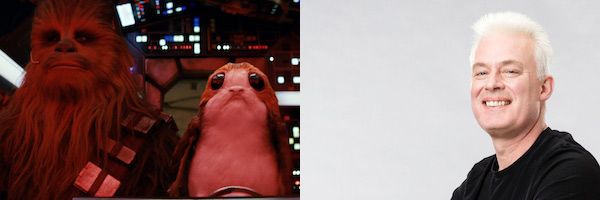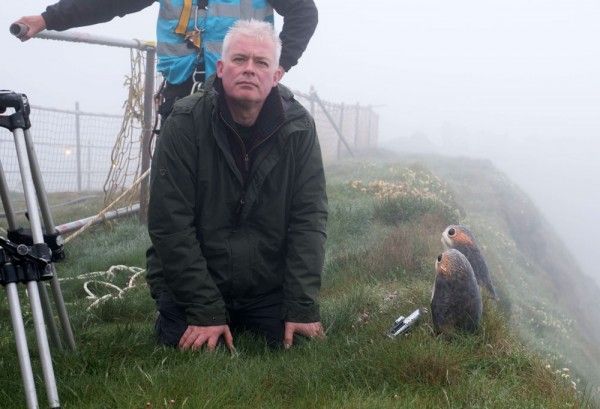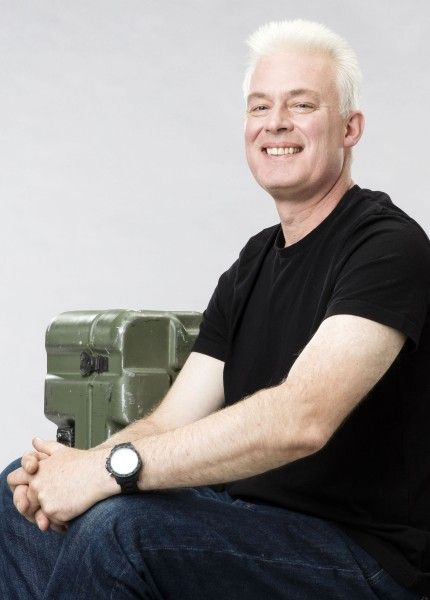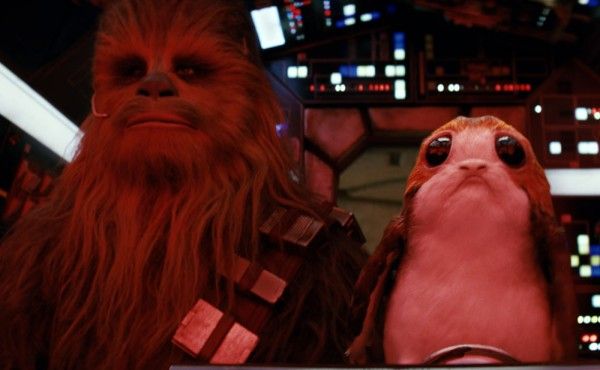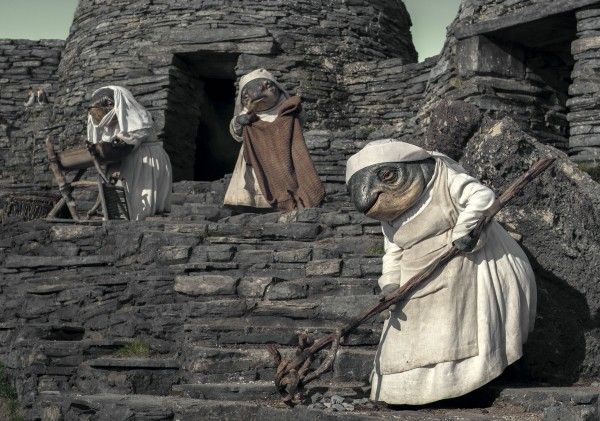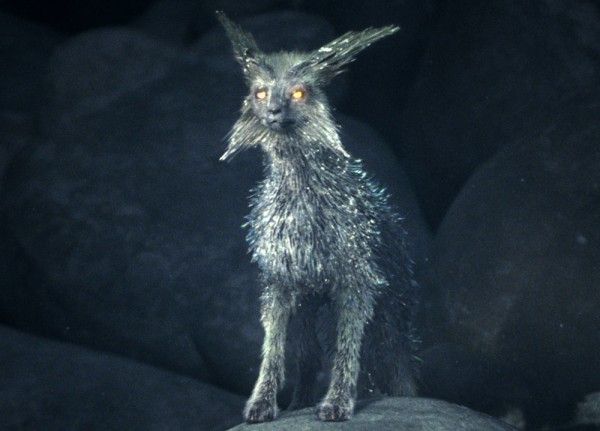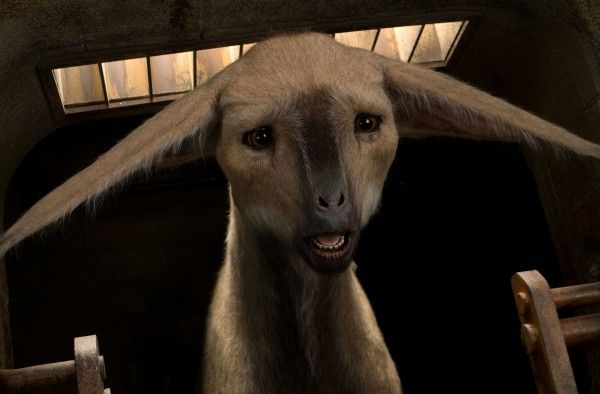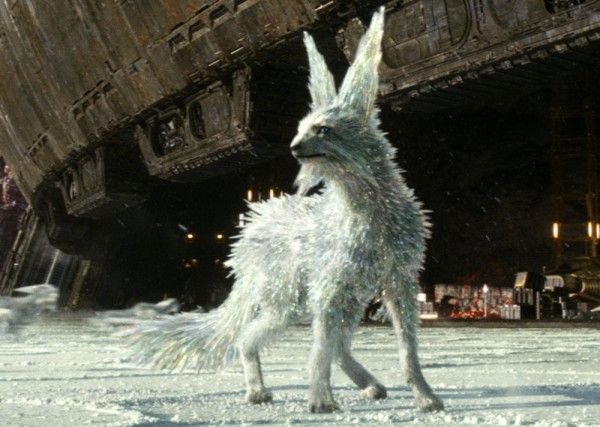Spoilers for Star Wars: The Last Jedi follow below.
After so much secrecy prior to the film’s opening, now that Star Wars: The Last Jedi is out in theaters, there are so many aspects of the film to discuss and marvel at, whether it’s the storytelling, characters, production design, visual effects, creatures, costumes or any endless number of things that have to come together in just the way right, like pieces of a puzzle, to make a finished film. Collider recently got the opportunity to chat with creature designer Neal Scanlan about creating some of the various species that populate this world, through both practical animatronics and CGI.
During this spoiler-filled 1-on-1 phone interview, Scanlan talked about the added pressure of successfully delivering for the Star Wars franchise, collaborating with a director as adventurous as Rian Johnson, the process for deciding which creature designs would make the film, the challenges of working with animatronics and puppets in real locations and environments, the relationship between the Porgs and Chewbacca, getting the milk scene to work, the importance of actually being able to interact with the Fathiers, and why they wanted to go back to the original mold for Yoda.
Collider: What’s the coolest piece of merchandise you have, of one of your own creations?
NEAL SCANLAN: Crikey! That’s a cool question! I have some really beautiful replicas that were made, like Rey with BB8. To me, they’re the coolest because I appreciate the art that’s gone into creating them. They’re beautifully sculpted, they’re beautifully painted and they’re beautifully presented, and I really appreciate that. Cool is not the word to use. They’re just to die for. Those are the sort of things where artists outside of the artists that I work with put their work out there, and I think they’re beautiful models and creations.
Every movie has its own set of challenges, but do the stakes feel higher because this is Star Wars? Do you feel an extra added amount of pressure, on top of just completing a project successfully?
SCANLAN: Absolutely! From the very beginning, when we first started to talk with J.J. [Abrams] and Kathleen [Kennedy] about what makes a Star Wars film a Star Wars film, and trying to identify the core ingredients, we hopefully have been quite successful in identifying those, so they become your responsibility to hold onto. Whenever we have conversations, and we were talking with Rian [Johnson], that’s always in the background. Our default is to fall back and say, “Is this true to the Star Wars world?” I always feel there’s something familiar about the Star Wars world because it’s not completely otherworldly. There are so many references back to our world that it keeps us engaged and keeps us feeling like we’re part of the journey. Things are not so unfamiliar that we can’t reach out and touch them almost. That’s very important to us. It’s a huge responsibility because it’s so easy to allow your own artistic enthusiasm or ego to get ahold of you, and you’re not allowed to do that on a Star Wars film You are a guardian and a caretaker of this beloved story.
When you realized what you would have to do for The Last Jedi, in particular, was there any specific thing that you were nervous about tackling?
SCANLAN: Rian is a very adventurous director. We took animatronics and puppetry onto a location, and we were shooting on an island in the weather conditions. That takes you out of your comfort zone. You’re not in a film studio where your support structure and your workshop is close by, and you can build specific rigs and things. We had to think very much like a guerilla team and work very efficiently, using the natural environment where we could. Rian had this desire to go do this in a real place with real practical effects, so that was a challenge.
Is it more challenging to have different creatures interact with each other, or will actual humans?
SCANLAN: They’re both challenging. When a creature reactions with a creature than we are very much in control. We can rehearse that and there’s no surprises. But as soon as you bring an actor or actress into the role, things become a little more spontaneous and you have to be spontaneous with your performance. You have to allow the person to feel free, so that they’re not constrained by the effects. The whole idea is that they should feel they’re acting against a normal counterpart, so we go to a lot of effort. Our puppeteers are chosen and they rehearse, so that they can present things on set with a real counterpart. It’s for the director, too, so that Rian doesn’t look at them like they’re extraordinary. They’re another member of the cast and crew. We quietly come in and do what we do, and we quietly disappear, just in the way that most of the actors and actresses do
There are a variety of different creatures in this film. Were there any creatures that you created, but then scrapped and weren’t able to actually use?
SCANLAN: No. We go through a long design process, which is really a creative marriage between ourselves and the director, which was Rian. It’s a way of getting to know each other, and certainly my way of getting to know how the director sees his film and his world. Most of the x-factor moments, as we call them, happen very early on, in the process. We put all of the designs out for a particular group of characters or a particular scene in the film, and Rian would walk along with a Post-It note. Each one that he would put a Post-It note on would go through to the next round. By the time we got to the end of the process, we knew the characters that we were going to make and that were going to be used in the film. Whether they end up in the film is a game of roulette, with run times and story. It’s all a part of the editing. I’m always a little apprehensive when I go see any of the things that I’ve worked on because I’m never quite sure what has made it to the cut.
Could you ever have imagined that the Porgs would catch on so quickly and so instantly become a sensation?
SCANLAN: We hoped so. There was a great deal of effort made to try to make them as engaging as we possibly could. We made many, many Porgs for one Porg, so that you could have a sad Porg, a happy Porg and an anxious Porg. We sculpted and feathered them to get you to engage emotionally with them, on that level. We also were somewhat apprehensive about stepping over the line too much. If we’d made them too childlike, we might have lost the more expanded audience. So, I’m absolutely delighted that they’ve been received with such warmth by everybody. It’s amazing! By the end of the shoot, I wanted to take a Porg home and live with it.
Did you ever think about or worry about making the Porgs look too cute?
SCANLAN: Yeah. It was a huge worry. I knew there was always going to be split opinions, but there is a fine line in Star Wars, where if you’re not careful, it can cross over. I knew that if people responded to them so well from the trailers that they would continue to respond that way to them, in the film. I don’t believe they ever step into overly cute or slapsticky. They remained believable to me. They could almost be the little critters that live in your back garden.
What makes the Porgs kindred spirits with Chewbacca, in particular?
SCANLAN: We were very aware that Rian wanted a moment to show that there could be friendship amongst other species. So, one of the Porgs was designed specifically to have Wookie qualities about it, the way that its feathered were colored and with the shape of the skull. When they first meet, they see themselves in each other. The idea is that this comraderie and friendship is because they see qualities in each other, which is a lovely thing to think of. Chewie has such a great character. He has off-the-cuff reactions to so many things, and this is the first time we’ve pushed a few buttons in the Chewie emotional scope. This little Porg has managed to do something no one else has ever done, and bring out a quality in Chewie that we’ve never seen before.
Let’s talk about that Porg-roasting scene with Chewbacca. Was there much discussion about what roasted Porg would look like, and did you ever worry about the reaction to that?
SCANLAN: There were endless discussions. It’s a very difficult scene. It was so important for Rian to get that connection, as quickly as possible, but there was also a certain element of not making it too graphic. One of the reasons we did the Porgs primarily practical is because we wanted to engage and step into that world of puppetry and theater. For that little vignette moment, we were tapping into the children in everybody, really. We felt that the idea was to have something that looked a little bit comic like and Looney Tunes was the way to go. We got it without having to be too gratuitous.
What were the reactions of Mark Hamill and Daisy Ridley, the first time they saw the Porgs that they’d be interacting with?
SCANLAN: What happens is that the puppeteers that perform them are in green suits with green rods, and they even wear green hoods, so that you can’t see their eyes or anything. You very quickly forget that there’s a puppeteer there and you just start to engage with them as little puppets. Like with any puppet, the puppeteers are great at ad-libbing, a little bit. We always try to keep the personality going, even when the cameras aren’t running. It’s fun to do it. For instance, we’d banter with Joonas [Suotamo], who plays Chewie, or we’d banter with Mark a little bit, and then you’d go into the moment. It’s about the performance and we want them to engage with them, not as a visual effect, but as a character, in their own right. They are a visual effect, by the nature of what we’re doing, but we want the actors and actresses to feel that they’re just another cast member and there’s nothing particularly special about them, even though there’s something special about them.
The scene with Luke Skywalker getting the milk from one of the Thala-sirens was so interesting. What was that like to do, from the look of the creature to how that moment would work?
SCANLAN: It was something that Rian wanted to shoot in the location, for real. We actually built that animatronic puppet, back at Pinewood, we transported it to ILM, and we flew it into that location with a helicopter. Once it was in the location, we locked two puppeteers inside there. The head opened a little bit, two puppeteers got inside, we put the head back up, and we sealed it with a prosthetic band that went around the side. And then, there were two puppeteers that operated the flippers on the outside, and a couple of other puppets in the background. We were set and ready for the arrival of the film crew, and we had a window that we knew we had to meet. It was designed to be able to breathe and there was a milk delivery system, on the inside. The guys on the inside could see what was happening on the outside, through monitors and a walkie system that we had, and Mark literally walked up, bent down, and milked his sea-sow. It made a lovely tasting drink, by the way. It wasn’t as disgusting as it looked. They CG-ed a tint on it, in the end, to make it look even more disgusting. It was wonderful to be there and to do it for real, amongst the elements.
You created the Fathiers, and along with CG, you also created a practical version. What did a practical version allow you to do, that you wouldn’t have been able to do without that, and what were the limitations of the practical version?
SCANLAN: The strongest thing about building an animatronic or practical version is that we knew that when Rose first meets these Fathiers that it was a really, really important scene, not only withing the story but for her, too, and we really felt that the best way of doing that was doing it as a practical effect. What practical effects are very good at doing are things that are relatively ground bound. We know that we can’t make a full-sized Fathier run around a racetrack or through the streets of Canto Bight, but what we do know is that we can introduce Rose to these creatures and introduce the audience to these creatures for real, for the first time, and try to build that emotion and connection between the two, there on the screen. So, we built the animatronic to be in the shadows inside the stable, and Rose and Finn approach it. There was a trolley version that we were able to push forward, that had an animatronic head with ears and eyes, to play that scene with Rose. Once the actors have got that image and that reality in their heads, it really helps them when they go to do the process work later. When they’re sitting on a much more reduced version in front of a blue screen, they still understand the creature that they’re relating to. And then, we built a fully articulated animatronic version that we were able to use for part of those sequences, to help really sell the CG. They did get to ride on a full size Fathier. It just didn’t run around.
What was the process for deciding how Yoda would look in this film? How challenging was it to make him practical, as a Force ghost, while also matching modern production standards?
SCANLAN: Right from the start, the first conversation I ever had with Rian was, “My gosh, this moment is a gift, and we have to make that gift true and honest and absolute for the Star Wars fans.” It was never a question that we wouldn’t do this in the same way that it is in The Empire Strikes Back. This might be, dare I say it, the last time that Yoda appears. I don’t know that for sure, but it might be. It’s a reunion of all that we hold true. I think he is one of the most iconic puppet moments in film history. To have Frank [Oz] puppeteer it and to be there on the set, it was very clear that we hold that respect and go back and look at what George [Lucas] had done and (puppet designer) Stuart [Freeborn] had done, and give that to the Star Wars fans. We spoke about not making him too transparent. He’s quite front lit, to begin with, and then he becomes more solid as the sequence goes on. The Yoda that we all love and identify with is the Yoda that had that intimate moment with Luke in The Empire Strikes Back, and we knew that this was a very intimate and very emotional moment. To have the three of them back together – Yoda, Frank and Mark – was just the only way to have done this. So, we contacted Lucasfilm and they sent every mold they had. Right at the bottom of the box, we found the original mold of Yoda’s head that was sculpted by Stuart. Other than that, it was a reconstructing, going back and looking at old magazines, pouring over every little bit of information that we could, and speaking to Frank as much as we could, to prod his memory, as to how he’d imagined it was made. It was absolutely on our mind to make this the closest replica that one could possibly ever make of the Yoda puppet. That was the mantra and that’s what we stuck to.
Star Wars: The Last Jedi is now playing in theaters.

